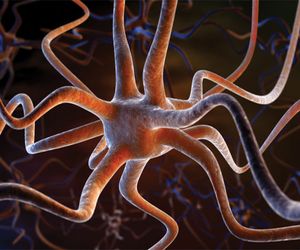Parkinson's Disease
Parkinson’s disease (PD) is a neurodegenerative disorder characterised by cell loss within the substantia nigra and symptoms of bradykinesia, rigidity and tremor. Lewy bodies (LB), aggregations of protein that form within nerve cells, are a hallmark of PD but also occur in dementia with Lewy bodies (DLB).
The ubiquitin-proteasome system removes unwanted proteins that are no longer required by the cell and dysfunction of this system results in a build of up protein within the cell, including α-synuclein which is a major component of LB.
Lewy Bodies
Lewy Bodies (LB) are α-synuclein-immunoreactive inclusions comprising a number of neurofilament proteins together with proteins responsible for proteolysis.
One of the first sites for deposition of LB is the olfactory bulb. As the disease progresses areas of the midbrain, basal forebrain and eventually the neocortex are affected.
Whilst the mechanisms of α-synuclein aggregation are still not fully understood, it appears that much of it found in LB is phosphorylated.
Phosphorylation may also influence cell toxicity.

The Wako Antiphosphorylated α-synuclein antibody is ideal for looking at expression of α-synuclein protein phosphorylated at serine 129, in both human and rodent tissue.

Alzheimer’s Disease
The ageing society brings an increase in research into age associated diseases such as dementia,
Read More